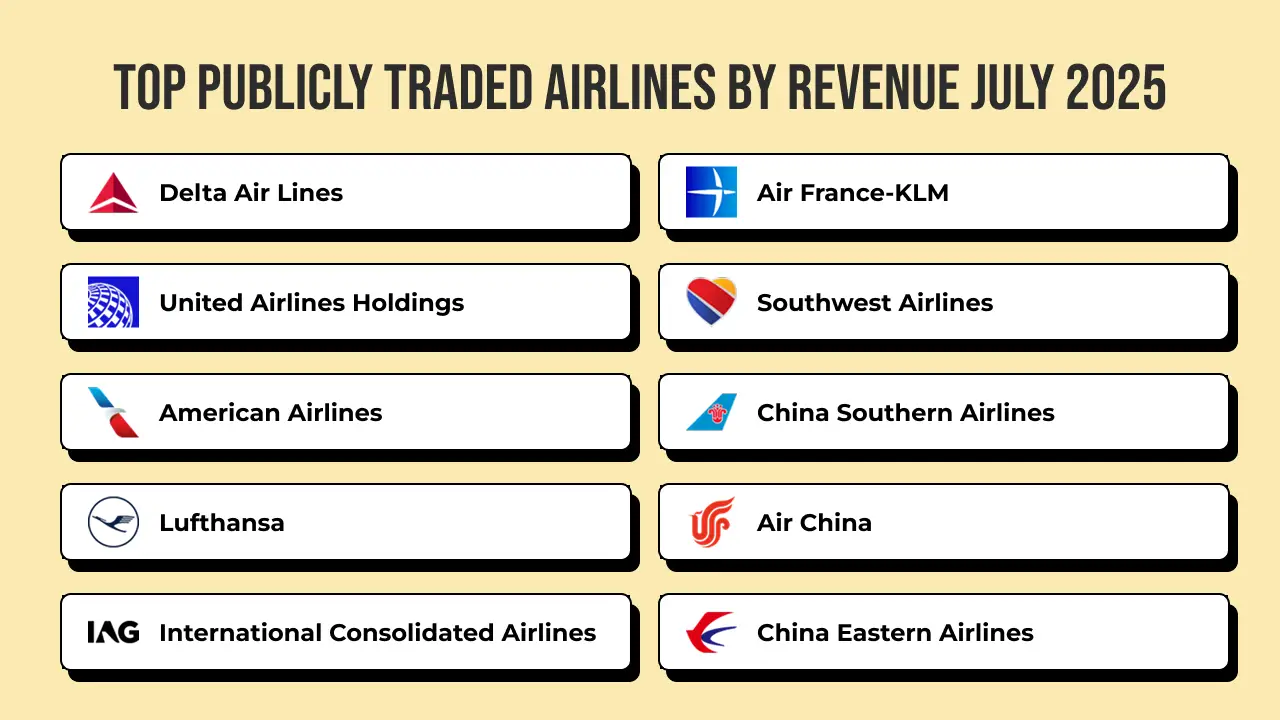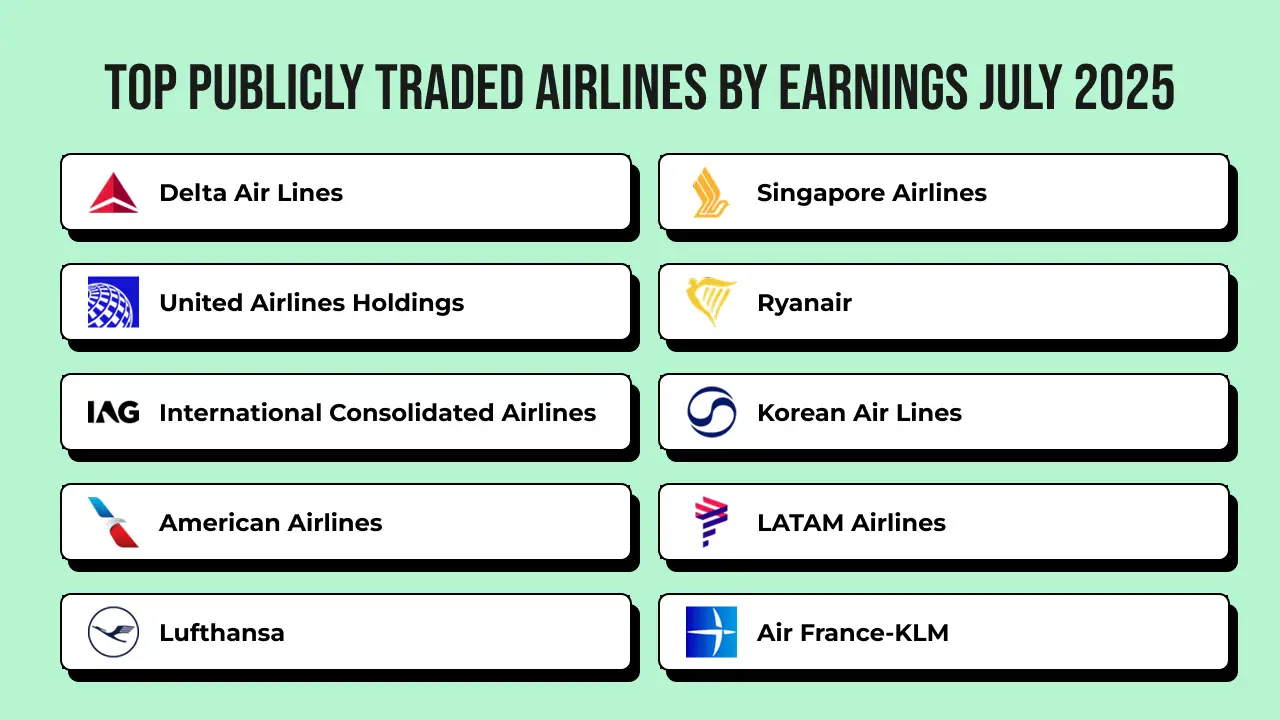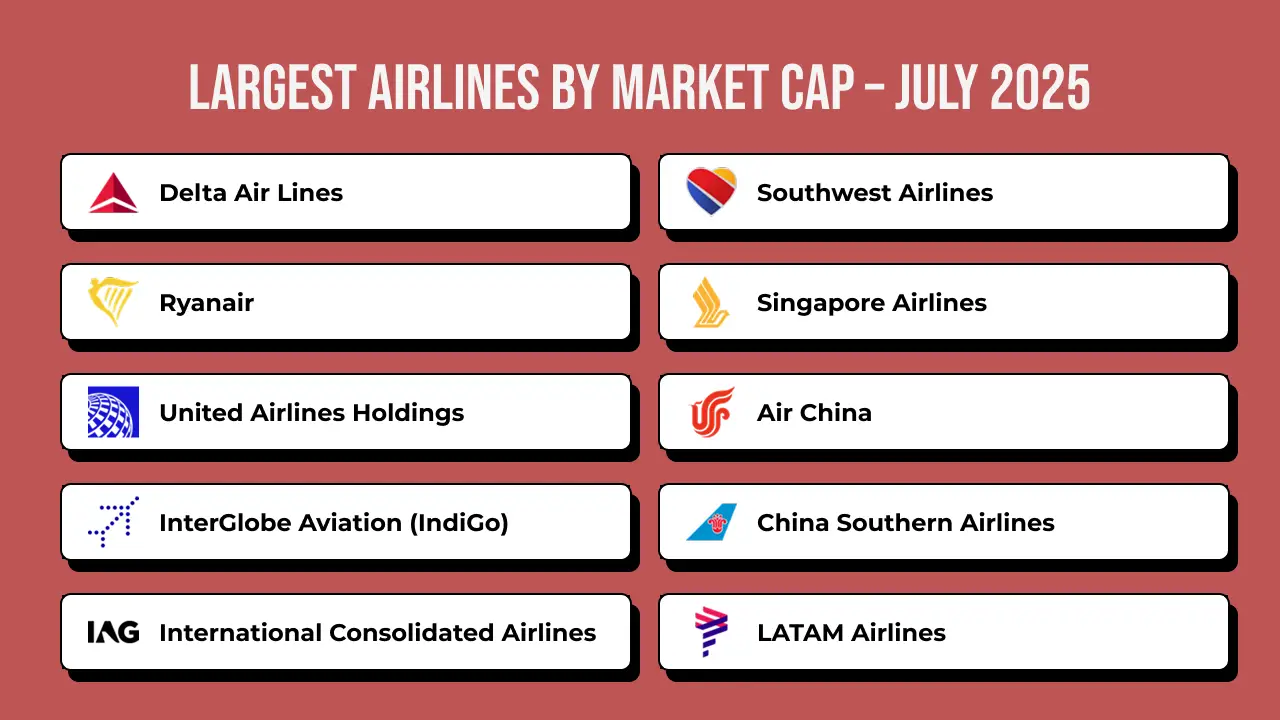The global aviation industry continues to demonstrate remarkable resilience and growth in 2025, with publicly traded airlines achieving substantial revenue figures that reflect the sector’s recovery from previous challenges and adaptation to evolving travel demands. The landscape remains dominated by major carriers from the United States, Europe, and Asia, each leveraging their strategic market positions, extensive route networks, and operational efficiencies to capture significant market share in the competitive aviation sector.
Top 10 Publicly Traded Airlines by Revenue (July 2025)
| Rank | Company Name | Revenue | Country |
|---|---|---|---|
| 1 | Delta Air Lines | $61.92 B | USA |
| 2 | United Airlines Holdings | $57.73 B | USA |
| 3 | American Airlines | $54.19 B | USA |
| 4 | Lufthansa | $41.32 B | Germany |
| 5 | International Consolidated Airlines | $35.28 B | Spain |
| 6 | Air France-KLM | $34.48 B | France |
| 7 | Southwest Airlines | $27.58 B | USA |
| 8 | China Southern Airlines | $24.04 B | China |
| 9 | Air China | $23.15 B | China |
| 10 | China Eastern Airlines | $18.38 B | China |
American carriers continue to lead the revenue rankings, with Delta Air Lines securing the top position at $61.92 billion, followed closely by United Airlines Holdings at $57.73 billion and American Airlines at $54.19 billion. This triumvirate of U.S. carriers demonstrates the strength of the domestic American market and the strategic advantages these airlines have built through their comprehensive hub-and-spoke networks, premium service offerings, and strong brand loyalty programs. Their dominance reflects not only the size of the U.S. aviation market but also their successful adaptation to post-pandemic travel patterns and their ability to capitalize on both domestic and international route recovery.
European airlines maintain a strong presence in the top revenue rankings, with Lufthansa leading the European contingent at $41.32 billion, followed by International Consolidated Airlines (IAG) at $35.28 billion and Air France-KLM at $34.48 billion. These European carriers have successfully navigated complex regulatory environments, maintained their competitive positions in the transatlantic market, and leveraged their strategic locations as gateways between continents. Their performance underscores the importance of alliance partnerships, operational synergies, and the ability to serve diverse international markets effectively.
Asian carriers, particularly those from China, demonstrate significant revenue generation capabilities with China Southern Airlines reaching $24.04 billion, Air China at $23.15 billion, and China Eastern Airlines at $18.38 billion. The strong performance of Chinese carriers reflects the vast domestic market within China and the growing importance of Asia-Pacific routes in global aviation. Additionally, premium carriers like Singapore Airlines ($14.63 billion) and established players like ANA Holdings ($14.03 billion) and Japan Airlines ($11.27 billion) showcase the diversity and strength of the Asian aviation market.
The revenue distribution among the top airlines reveals interesting market dynamics, with significant gaps between the largest carriers and mid-tier operators. While the top three airlines each generate over $54 billion in revenue, the tenth-largest carrier, China Eastern Airlines, reports $18.38 billion—highlighting the concentration of market power among the largest players. This concentration reflects economies of scale, network effects, and the capital-intensive nature of the airline industry, where size often translates to competitive advantages in route planning, aircraft procurement, and operational efficiency.
Looking at the broader landscape represented in the complete dataset, regional carriers and budget airlines continue to find their niches, with companies like Southwest Airlines ($27.58 billion) proving that focused business models can generate substantial revenues. The presence of carriers from diverse markets—including Latin America, the Middle East, and smaller European markets—demonstrates the global nature of the aviation industry and the various strategies airlines employ to capture value in their respective markets and route networks.











